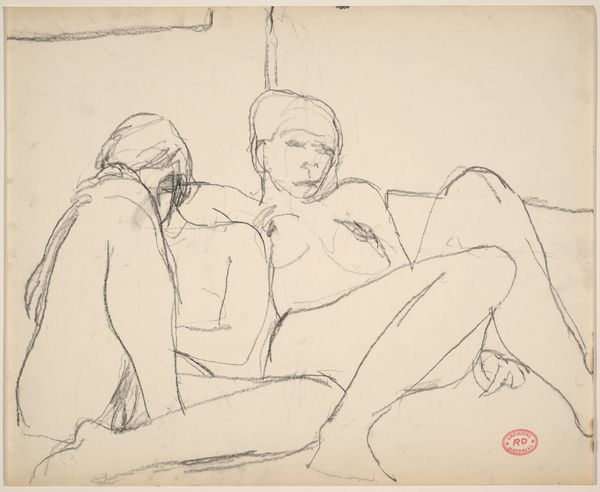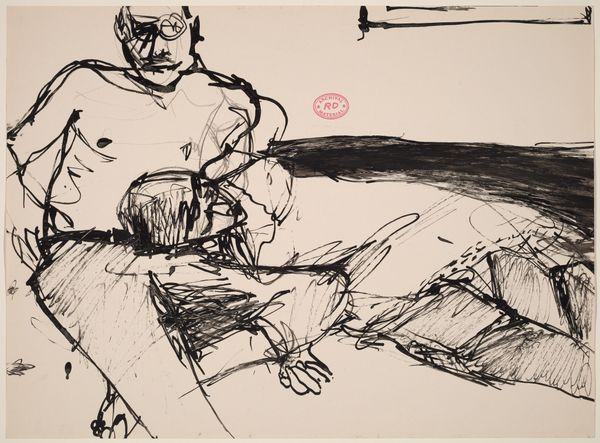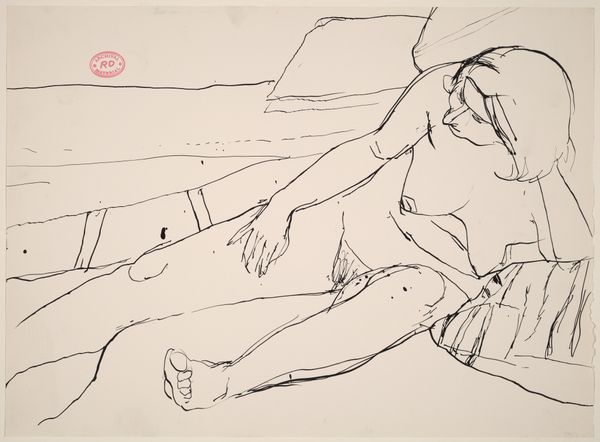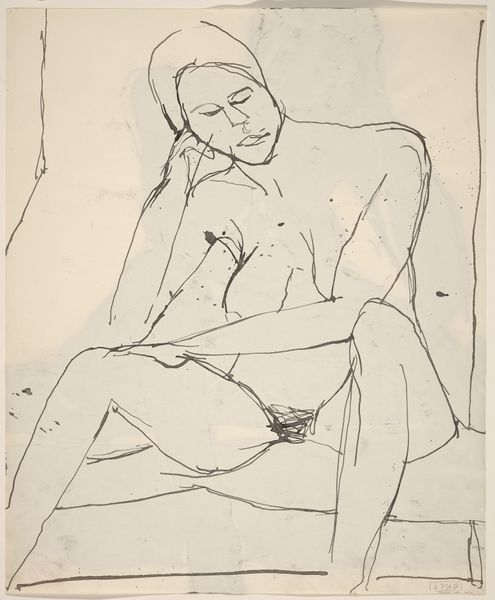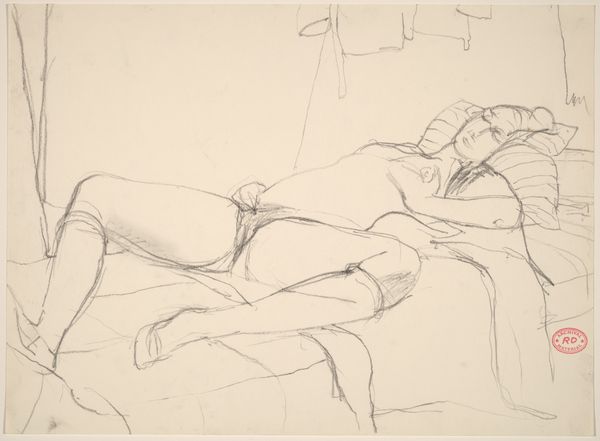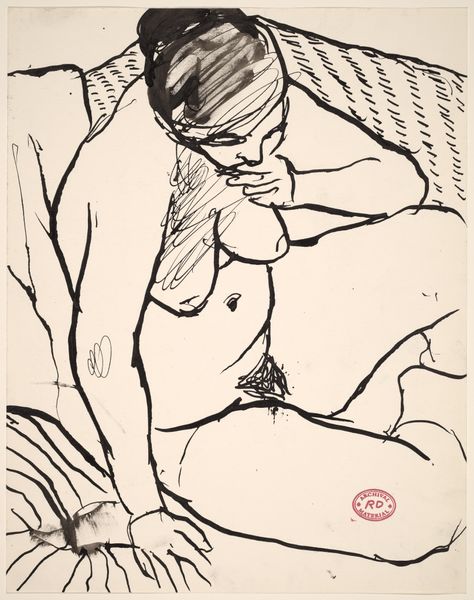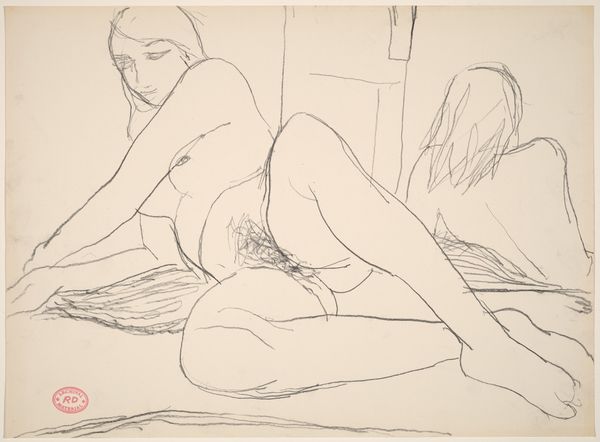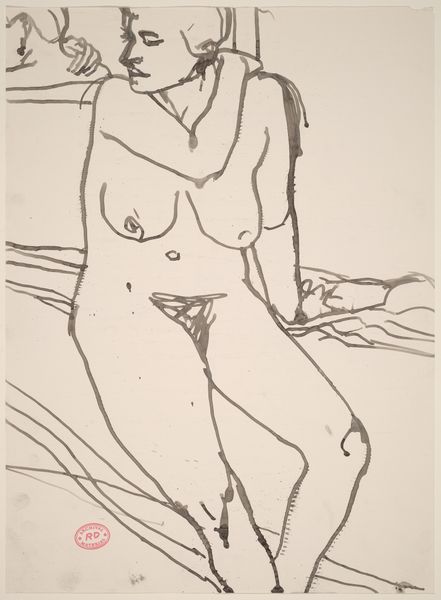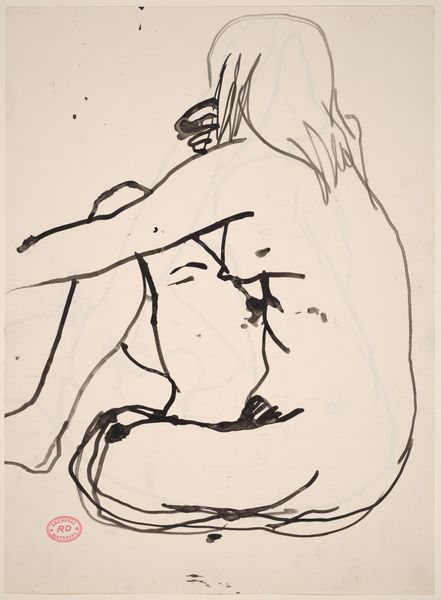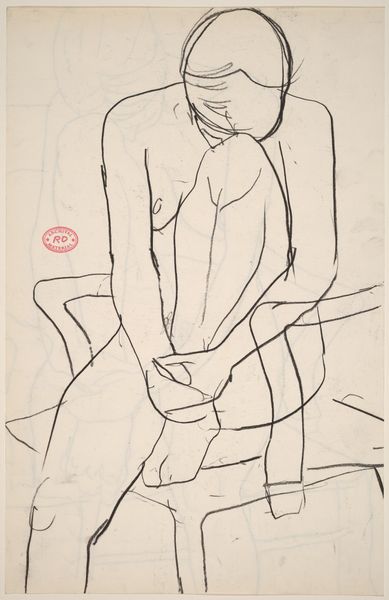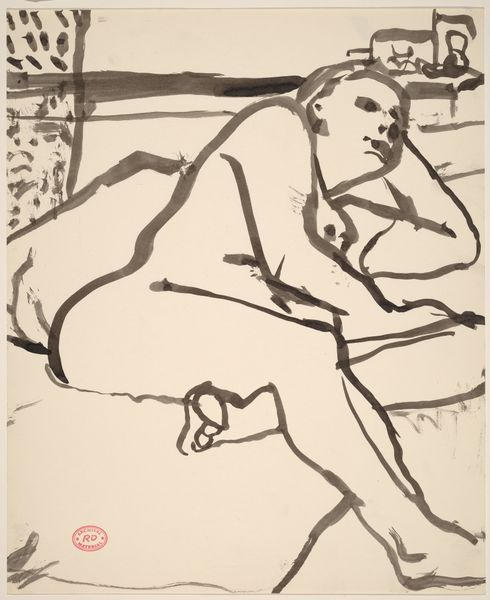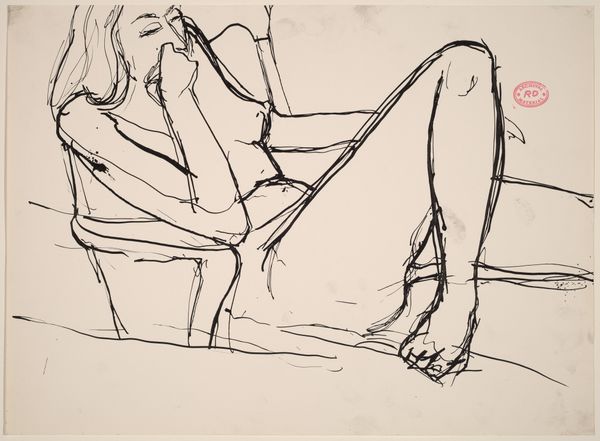![Untitled [female nude resting her arm on another's knee] by Richard Diebenkorn](/_next/image?url=https%3A%2F%2Fd2w8kbdekdi1gv.cloudfront.net%2FeyJidWNrZXQiOiAiYXJ0ZXJhLWltYWdlcy1idWNrZXQiLCAia2V5IjogImFydHdvcmtzLzJlMzY3MWZkLTQ2ZjEtNDAwNi04OWQ5LTMzMGUxZGU1ZGMzMC8yZTM2NzFmZC00NmYxLTQwMDYtODlkOS0zMzBlMWRlNWRjMzBfZnVsbC5qcGciLCAiZWRpdHMiOiB7InJlc2l6ZSI6IHsid2lkdGgiOiAxOTIwLCAiaGVpZ2h0IjogMTkyMCwgImZpdCI6ICJpbnNpZGUifX19&w=3840&q=75)
Untitled [female nude resting her arm on another's knee] 1955 - 1967
0:00
0:00
drawing, ink, pen
#
portrait
#
drawing
#
ink drawing
#
pen sketch
#
figuration
#
bay-area-figurative-movement
#
ink
#
line
#
pen
#
nude
Dimensions: overall: 31.8 x 43.2 cm (12 1/2 x 17 in.)
Copyright: National Gallery of Art: CC0 1.0
Curator: Let’s turn our attention to Richard Diebenkorn’s pen and ink drawing, “Untitled [female nude resting her arm on another's knee]," created sometime between 1955 and 1967. Editor: It strikes me as intimate. The raw linework gives it an immediacy, as if we’re witnessing a private moment. There is a certain vulnerability evoked in the unadorned figures. Curator: It is certainly a fascinating study of intimacy and form, especially within the context of Diebenkorn's broader engagement with representing the female figure and the social gaze. How might this composition be situated in relation to feminist discourse concerning representation and power? The reclining nude, the obscured face... what meanings can be gleaned? Editor: Right. But I think there is more going on here. The artist chose pen and ink - common materials; humble, really. Ink is immediate but also permanent, a deliberate, economical method to portray figures interacting within a shared space. And labor, it demands precision, a careful hand that echoes traditional craft more than, say, academic painting. It democratizes representation. Curator: An intriguing perspective. I am drawn to how Diebenkorn's minimalist approach forces us to confront the body stripped bare, vulnerable to the implied viewer. It beckons complex questions about women as objects, bodies shaped by societal expectation. Does this composition actively challenge or passively reinforce these traditional frameworks? Editor: Both? Diebenkorn highlights the process, the hand of the artist—we see the labor. This self-reflexivity makes the viewer aware that this is not passive observation. By emphasizing process and form, we move beyond simple objectification. And the scale seems intentionally small, which adds to that intimacy. Curator: I can agree with the element of intimacy you brought up. We have to acknowledge that even simple representation can evoke questions surrounding the historical narrative of the female nude. This perspective emphasizes how art cannot exist separate from the complex interplay of identity and politics. Editor: The dialogue, though. That’s the thing. What is this drawing asking us about production, reception, and the means by which art becomes meaningful to everyday people? These choices speak volumes about the material conditions of the artist and how meaning itself is made. Curator: These figures and their relationships transcend simple observation to ask crucial questions about bodies, labor, and identity within our societies. Editor: Exactly. So much conveyed through such careful and economical choices. It gives me a renewed appreciation for drawing as a mode of both production and, importantly, contemplation.
Comments
No comments
Be the first to comment and join the conversation on the ultimate creative platform.
